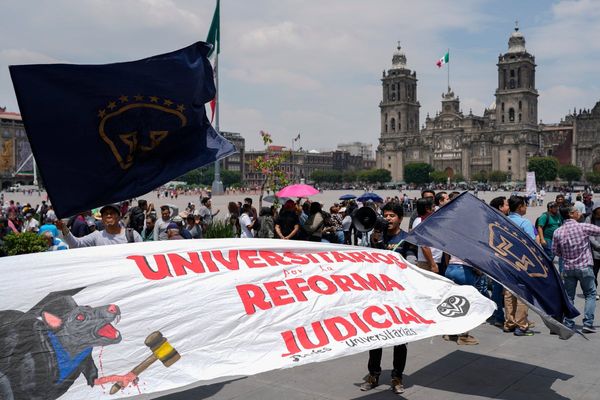The five people aboard a submersible that went missing during a dive to the wreck of the Titanic have approximately 40 hours of breathable air left, the US Coast Guard has said. The submersible, named Titan, lost communication with tour operators on Sunday.
It was about 435 miles south of St John’s, Newfoundland, during a voyage to the Titanic shipwreck off the coast of Canada. Captain Jamie Frederick said a “unified command” of multiple agencies was formed on Monday to tackle the “very complex problem” of finding the missing submersible, but this has so far “not yielded any results”.
Speaking at a press conference in Boston on Tuesday, Captain Frederick said: “So, first of all, it’s an estimate, right. We know from the data we were using, a starting point was 96 hours. We know at this point we’re approximately about 40/41 hours (of oxygen left)."
He added: “We know there’s about 40 hours of breathable air left, based on that initial report.”
Rescuers are in a race against time to find British billionaire Hamish Harding and four other passengers on board the 6.7 metres (22ft) long OceanGate Expeditions vessel. They are UK-based businessman Shahzada Dawood and his son Suleman, reportedly together with French submersible pilot Paul-Henry Nargeolet and chief executive and founder of OceanGate Expeditions Stockton Rush.
Captain Frederick said: “On Sunday, the co-ordination command centre in Boston received a report from the Canadian expedition vessel Polar Prince of an overdue 21 foot submarine, Titan, with five people on board. The Titan was attempting to dive on the wreck of the Titanic, approximately 900 miles east of Cape Cod and 400 miles south of St John’s, Newfoundland.
“Approximately one hour and 45 minutes into the scheduled dive, the Polar Prince lost all communication with the Titan, Polar Prince conducted an initial search and then requested Coast Guard assistance. The US Coast Guard in Boston assumed the responsibility of search-and-rescue mission co-ordinator and immediately launched search assets.
“Since Sunday, the Coast Guard has co-ordinated search efforts with the US and Canadian Coast Guard, Air National Guard aircraft and the Polar Prince (the Titan’s mother ship), which has searched a combined 7,600 square miles, an area larger than the state of Connecticut.
“These search efforts have focused on both surface, with C-130 aircraft searching by sight and with radar, and subsurface, with P-3 aircraft we’re able to drop and monitor sonar buoys. To date, those search efforts have not yielded any results.”
He added: “On behalf of all the men and women of the United States Coast Guard and our search partners, we offer our most heartfelt thoughts and prayers for the five crew members, their families and their loved ones. Our crews are working around the clock to ensure that we were doing everything possible to locate the Titan and the five crew members.”
He said the unified command includes the United States Coast Guard, the United States Navy, Canadian Armed Forces and Coast Guard and the Titan’s parent company OceanGate.
“This is a complex search effort, which requires multiple agencies with subject matter expertise and specialised equipment,” he added. "While the US Coast Guard has assumed the role of search and rescue mission co-ordinator, we do not have all of the necessary expertise and equipment required in a search of this nature.
“The unified command brings that expertise and additional capability together to maximise effort in solving this very complex problem.”
On whether the UK Government had offered to assist the search but been told its help was not needed, he said “no, I’m not aware of that”.







